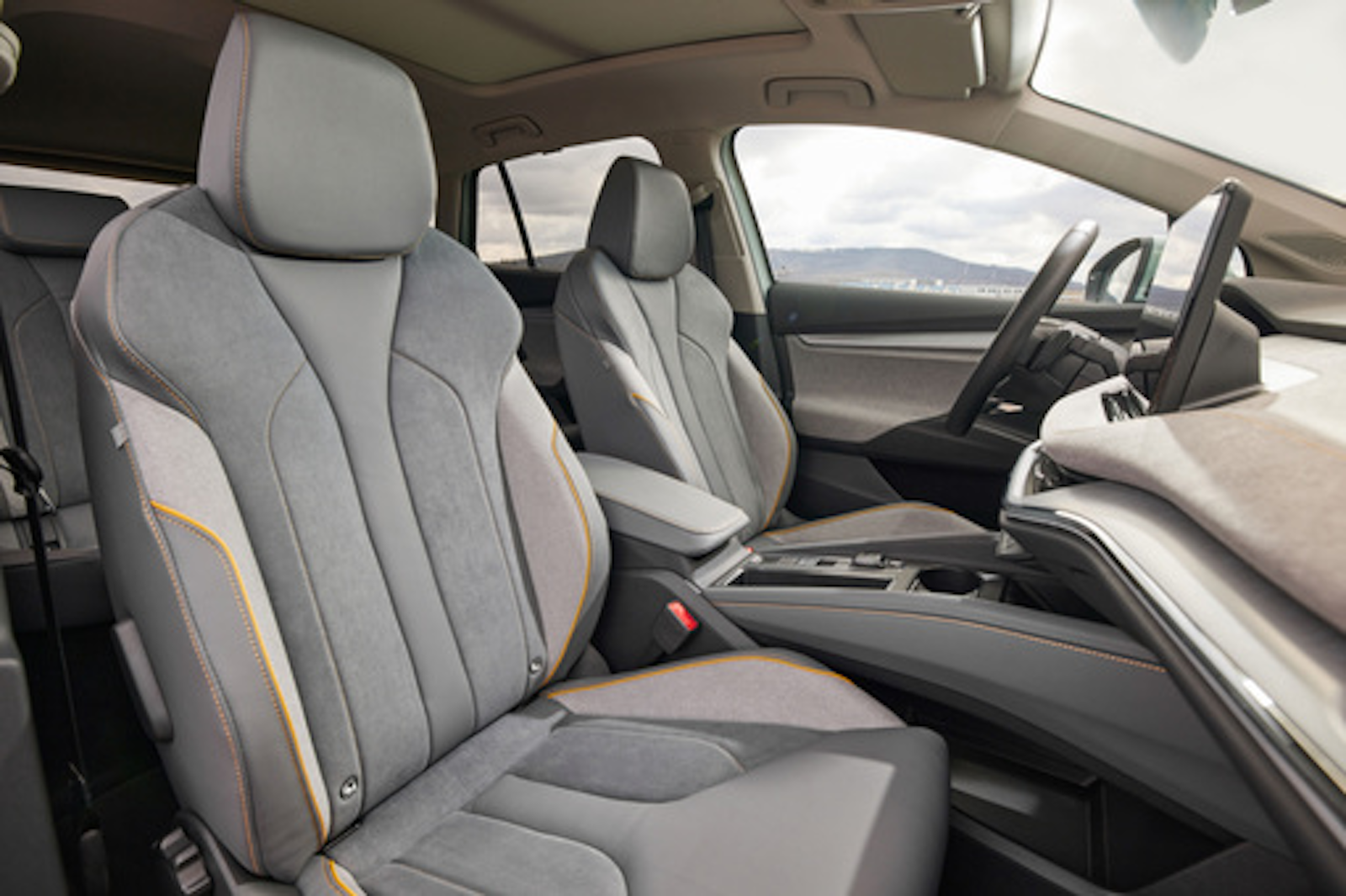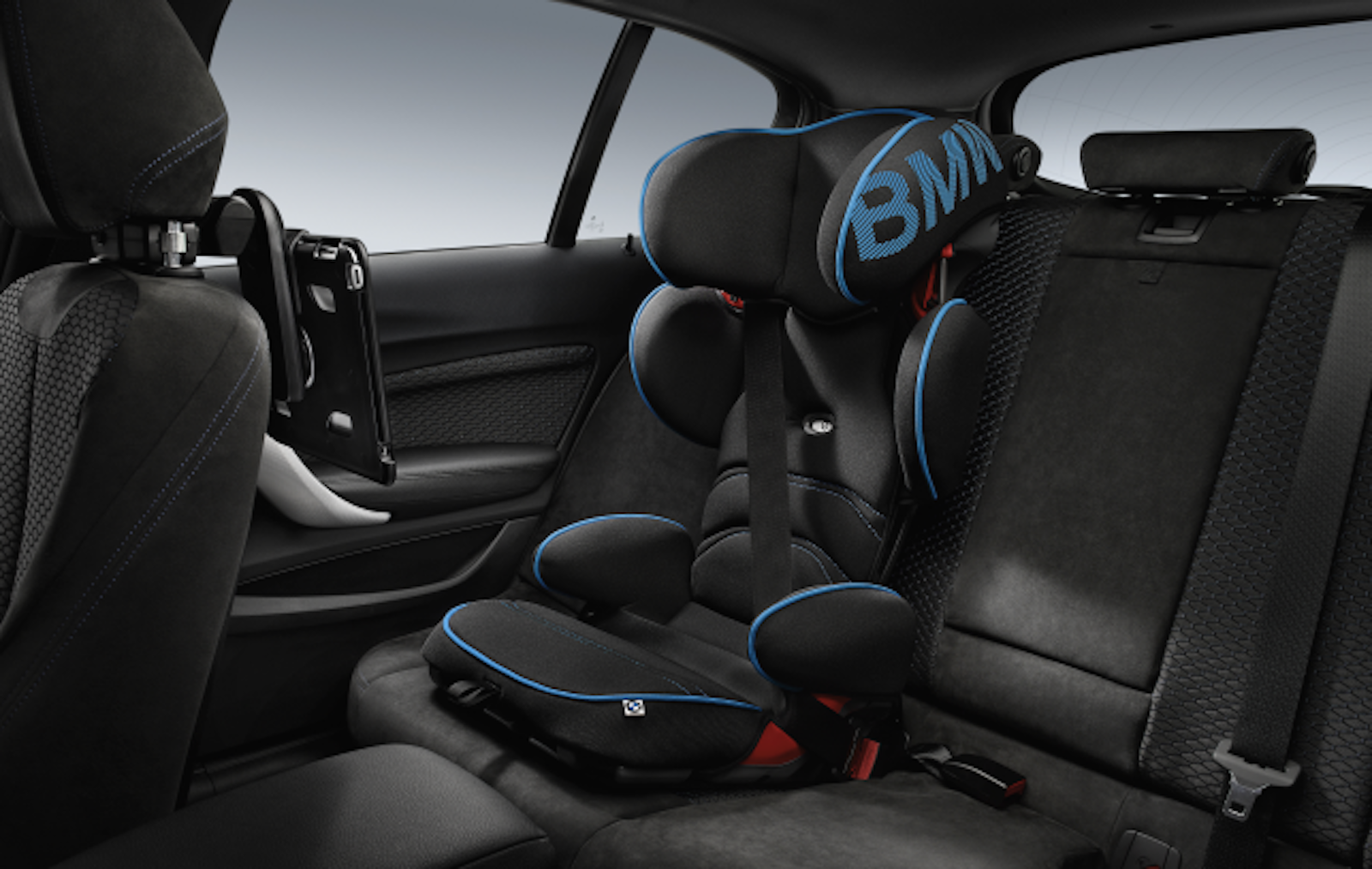Until when is child seats compulsory and when do you no longer need a child seat?
Cool and comfortable - that's usually not what child seats are, but they are safe. In Germany, there is not only a child seat requirement, a trip without this safety precaution is also quite dangerous. In this article, we show how long a child seat is necessary, which child seat fits which age and what penalties are possible for driving without a child seat.
If you are buying a new car and want to transport toddlers, we have listed our top new car offers for you here, which come up with a particularly large number of child seat attachment options:
| Model | Offers from | |
| Opel Zafira e-Life | €49,922 | Compare offers |
| Renault Scénic E-Tech | n/a | Compare offers |
| BMW 2 Series Active Tourer | €30,468 | Compare offers |
| Volvo XC90 | €63,478 | Compare offers |
| VW Multivan | €45,519 | Compare offers |
When can children ride without a child seat?
In Germany, child seats are compulsory for children up to 12 years of age or under 1.50 metres tall.
Up to 12 years of age, children, toddlers and babies need a child seat in the car. But in fact, children can also leave the child seat before this age limit ends, because in addition to age, a height is also specified. Children must be at least 1.50 meters tall before they are allowed to leave the seat if they are younger than 12 years old.

In a nutshell, two values are relevant - age, 12 years, and height, 1.50 meters - even if one of the two parameters is met, there is no longer a child seat requirement.
Especially for children who are already 12 years old but not yet 1.50 meters tall, it still makes sense to keep a child seat. Since the children do not yet have a sufficiently high seat size, the seat belt does not run correctly: and after all, the seat belt is compulsory.
You can read the exact regulations in the road traffic regulations § 21 of the StVO.
If you transport children in a vehicle commercially, you also need a passenger transport license.
Why do children need a child seat?
There are numerous safety advantages that the child seat offers. To prevent toddlers from simply opening their belts on boring car journeys and thus putting themselves in a dangerous situation, child seats are often equipped with a restraint device that shields access to the belt opener – so that only the parents can unbuckle the child.

Especially for infants, it is important that the seat is positioned in the right place in the car and also in the right direction. The front passenger seat is only suitable if drivers can switch off the airbag. Otherwise, the ride at this point can have fatal consequences for the baby in the event of an accident. It is therefore safer to put the child in the back seat.
Infants should always be fastened against the direction of travel – as is also prescribed for class 0+ seats. For the sake of a clear conscience and safety, you should always reserve the safest place in the car for your child. Also take a look at the VW Sharan alternatives, there is room for some children here.
In infants, the head usually still makes up the greatest weight on the body – if the baby is positioned against the direction of travel, the impact can be better cushioned in the event of an accident and serious injuries to the spine are less likely. The underlying NCAP crash test rating is also important for increased safety in the vehicle.
When are children allowed to sit in the front?
Legally, children of any age – including babies – are allowed to sit in the front passenger seat. However, the prerequisite is that they sit in a suitable child seat as long as they are under 12 years old or shorter than 150 centimeters.
Child seat in the front passenger seat - what applies?
By law, children of any age can also sit in the front passenger seat – a suitable child seat certified according to the test standard is mandatory for children under 12 years of age or less than 1.50 meters tall, even in the front. How you are allowed to attach a child seat to the front passenger seat and whether this is allowed at all depends on the respective child seat model.
If it is still a baby or toddler who is to be transported in the rear-facing seat, you must make sure that the front airbag is switched off when positioning the car in the front passenger seat - otherwise the child risks serious injuries if the car crashes.
A tablet holder can also be attached to the front to replace the navigation system, for example.
Which child seat for which age?
There are many child seats. Creative parents might come up with the idea of simply making a bowl themselves - but it's not that simple. A baby car seat or child seat must comply with German traffic regulations and meet the UN ECE Reg. 44 or 129 test standards. Only if these requirements are guaranteed is the child seat obligation fulfilled.
| Child Seat Types | |
| Infant Car Seat | Birth up to approx. 15 months |
| Car seat | approx. 15 months to 4 years |
| Booster seat | 4 years to approx. 12 years |

By the way, since April 2008, only child seats with the license plates ECE 44-03 or ECE 44-04 (or higher) have been permitted.
Infant car seats – When will child seats be replaced by Maxi-Cosi?
Baby car seats (Maxi-Cosi) are suitable for infants, toddlers from about 15 months are allowed to ride in a child seat.
Just like the infant car seat, the child seat has its own belt system that makes the ride as safe as possible. The child seat can be used by children up to the age of about 4 years.
Rear-facing seats – child seat for toddlers
Rear-facing seats are suitable for children weighing between 9 and 18 kilograms and between the ages of one and four.
Meanwhile, rear-facing car seats do not bear their name without reason: a rear-facing seat is mounted against the direction of travel and thus increases child safety many times over, because the child's head and spine can suffer less damage in the event of an accident thanks to the "double" suspension of the child seat and backrest of the front seat.
Child seat for adolescents and booster seats
A child seat of classes II or III is suitable for adolescent children. These are booster seats that children weighing 15 to 36 kilograms can use – they are then about 7 to 12 years old.
You should avoid booster seats without backrests or guide horns as much as possible, as these offer little lateral protection in the event of a collision and promote the seat belt from slipping.

When do children no longer need a child seat – clues
Child seats are compulsory up to the age of 12 or a height of up to 1.50 metres.
Of course, many children emulate their parents and want to do without a child seat or booster seat as quickly as possible – like the cool ones. Until the child is old enough or big enough, however, you should not be persuaded.
In concrete terms, this means that parents can theoretically let their offspring travel without a child seat as soon as one of the two parameters – age or size – is met. However, we advise against quickly omitting the seat. For example, if the child is already 12 years old but still too small, the seat belt can fit awkwardly and increase the risk of injury instead of minimizing it.
Test standard R 44 & R 129 – Rules according to weight classes and size
Test standard R 44 – From what weight does which child seat work?
Let's first take a closer look at the R 44 test standard. It divides the seats into different weight classes:
| Class | Body weight |
| 0 + | under 13 kg |
| I | 9 to 18 kg |
| II | 15 to 25 kg |
| III | 22 to 36 kg |
While class 0+ may only be positioned against the direction of travel, it doesn't matter for classes I and II. These can be attached in and against the direction of travel. For class I, however, the rearward direction is recommended - so-called rear-facing seats are suitable for this. If the child reaches class III, the seat may only be used in the direction of travel.

Seats that can be fastened with the help of Isofix, however, are particularly safe. Isofix refers to a system in which the child seat can be connected directly to the body of the car. This ensures that the seat is optimally protected against slipping.
Test standard R 129 – From which size does which child seat apply?
Now let's take a look at the R 129 test standard, also known as "i-Size". This does not divide child seats according to weight, but according to the size of the children. Children often grow faster than they gain weight.
| Class | Size |
| Q0 | less than or equal to 60 cm |
| Q1 | 60 to less than or equal to 75 cm |
| Q1.5 | 75 to less than or equal to 87 cm |
| Q3 | 87 to less than or equal to 105 cm |
| Q6 | 105 to less than or equal to 125 cm |
| Q10 | greater than or equal to 125 cm |
If you look at Regulations 44 and 129, you get the impression that you have to buy a new seat all the time, but that's not really the case. There are child seats that are approved for several classes at the same time. However, it is important here that infants who are only a few months old are often excluded from such combined data. Very few such seats actually fit neither from birth nor up to a height of 1.50 meters.
Kinder ohne Kindersitz – diese Strafen drohen
Hier ein kurzer Überblick über die Strafen bei Kindern ohne Kindersitz:
| Verstoß | Strafe / Bußgeld |
| Kindersitz falsch eingebaut | 25 Euro |
| Ein Kind ohne Kindersitz | 30 Euro |
| Mehrere Kinder ohne Kindersitz | 35 Euro |
| A child without safety devices (disregard of the child seat and seat belt obligation) |
60 Euro + 1 point in Flensburg |
| Several children without safety ( disregard of the child seat and seat belt obligation) |
70 Euro + 1 point in Flensburg |
What happens if you forget the car seat? Initially, fines are to be expected. The lowest fine starts at 30 euros and applies if you defy the child seat requirement and transport a child without a child seat. If there are several unsecured children in the car, the fine increases to 35 euros.

If the children are also not wearing seatbelts, there is a risk of 60 euros and a point in Flensburg. If several children are not buckled up and without a child seat on board, 70 euros are due - and you will also get the point in Flensburg credited.
But not only toddlers have to be transported on a child seat, baby seats are mandatory for infants. Here, the shell is rarely forgotten, but many parents position their baby incorrectly on the seat. If the front airbag is active on the front passenger seat, the infant car seat must not be positioned there. If drivers disregard this regulation, 25 euros must be paid. If there was no indication on the shell on how to attach the seat, a fine of 5 euros will be incurred.

Compulsory child seats in cars – abroad, special situations & exceptions
Off on holiday - unless you want to leave your child or children at home, it is advisable to find out about the situation regarding the child seat requirement abroad. The regulations on the child seat requirement vary greatly and also entail different and often higher penalties - depending on the regulations, not only your wallet, but also your offspring is at risk.
Compulsory child seats abroad?
Whether compulsory or not, you should actually always put your children in a child seat for safety reasons alone. In other countries, the regulations are sometimes even more extensive and stricter than in Germany; the fines can deviate greatly from the German values. A violation abroad can therefore be very expensive.
- Compulsory child seats in Switzerland: EDE Regulation No. 44 also applies here.
- Compulsory child seats in Austria: Children in Austria must travel in child seats up to the age of 14 or be taller than 1.50 metres.
- Compulsory child seats in Belgium and Spain: The child seat requirement applies here up to a height of 1.35 metres.
- Compulsory child seats in France: In France, the age limit for child seats is 10 years.
- Compulsory child seats in Italy: Appropriate restraint up to 36 kg and 1.50 metres tall. Additional info: For children up to three years of age, child seats with an alarm signal must be used to prevent them from being forgotten in the car – but this only applies to vehicles registered in Italy (but also rental cars!).
Exceptions to the child seat requirement
There are actually situations in which the child seat requirement does not apply. Although you won't be punished at such moments, you shouldn't always make use of such exceptions. Your child is safer in the child seat - that much is certain.

Nevertheless, we will briefly introduce you to when you can legally do without an extra seat:
- Buses that weigh more than 3.5 tonnes: If you are travelling on a bus with your child or infant, there is no obligation to have a child seat.
- Too little space in the car: If not all passengers fit in the car due to a child seat, the seat may be dispensed with if the child is at least 3 years old.
- It is not possible to attach the seat.
- Exception for passenger transport: Child seats are usually not compulsory in taxis and buses.